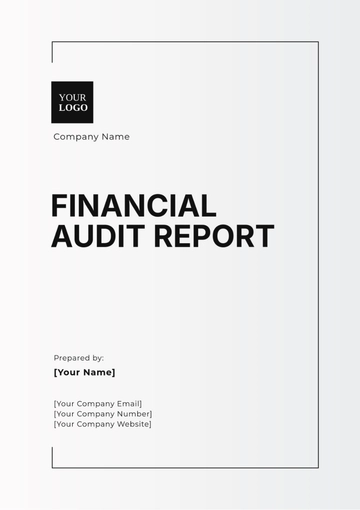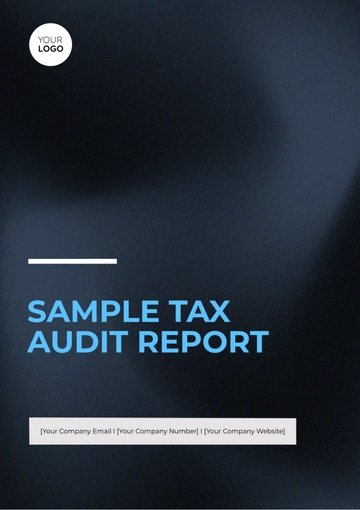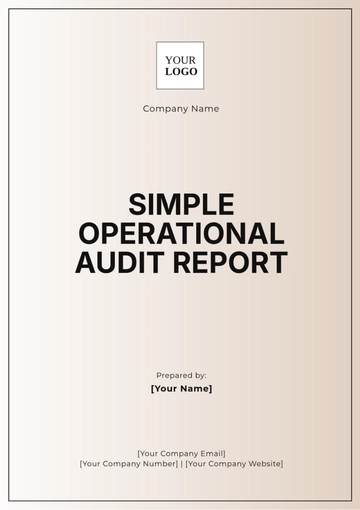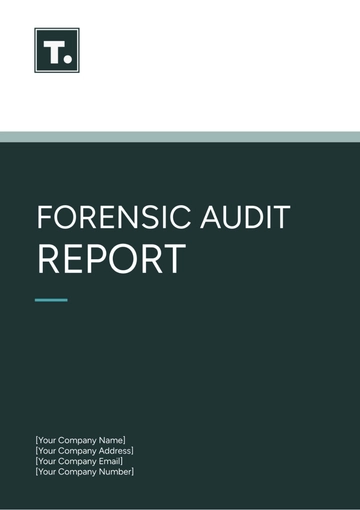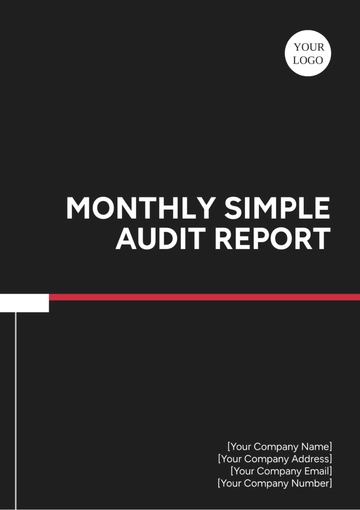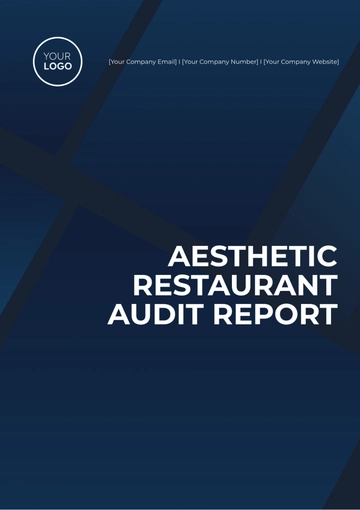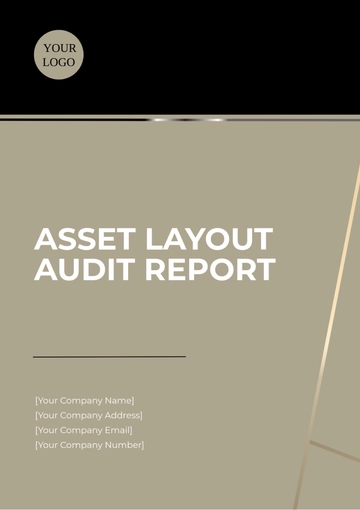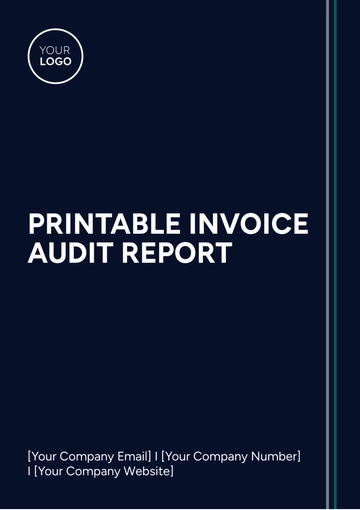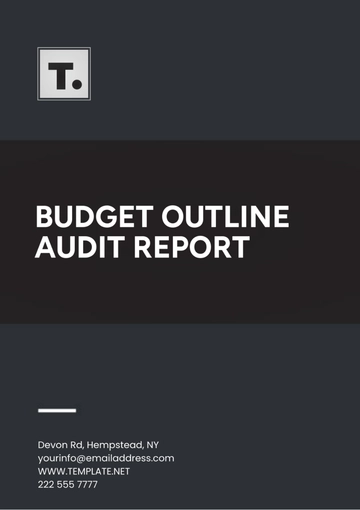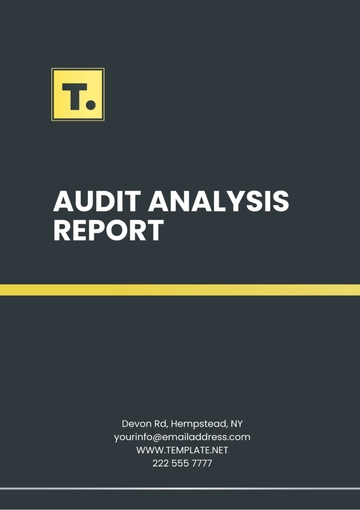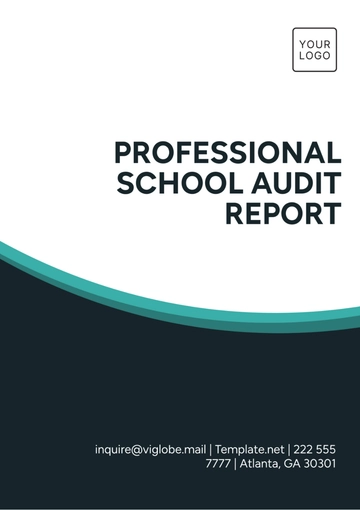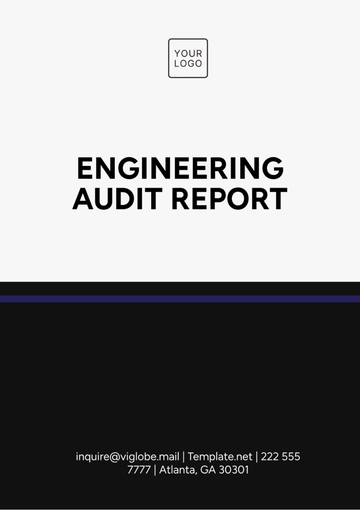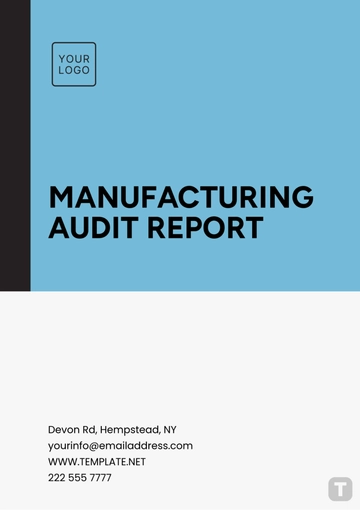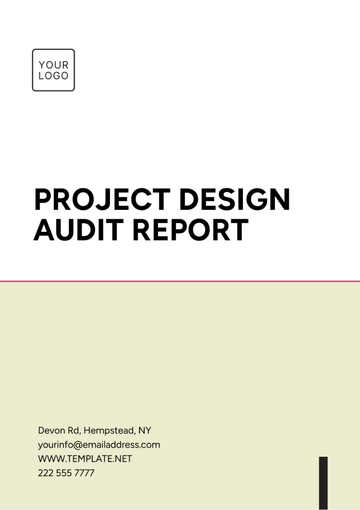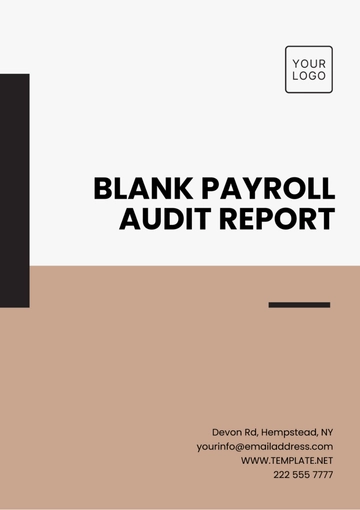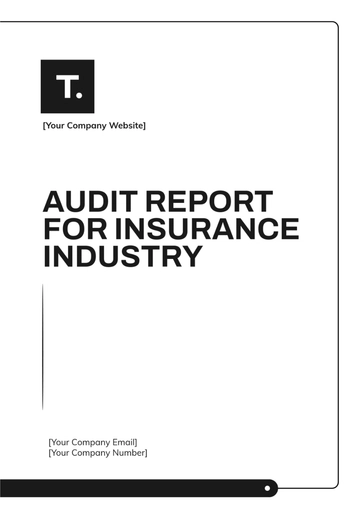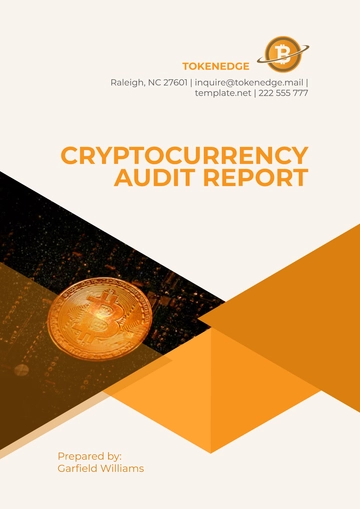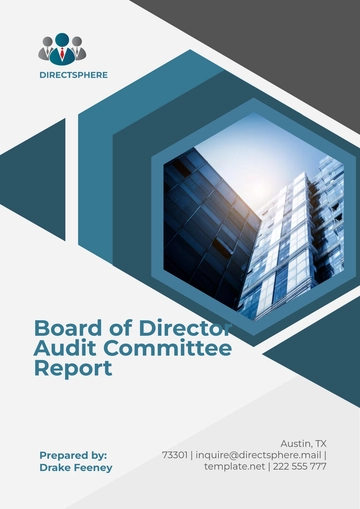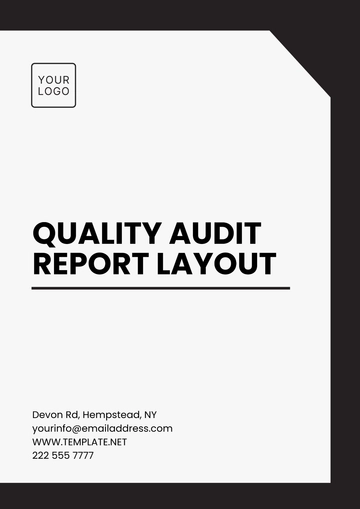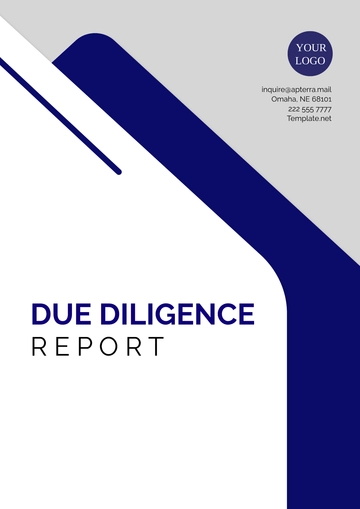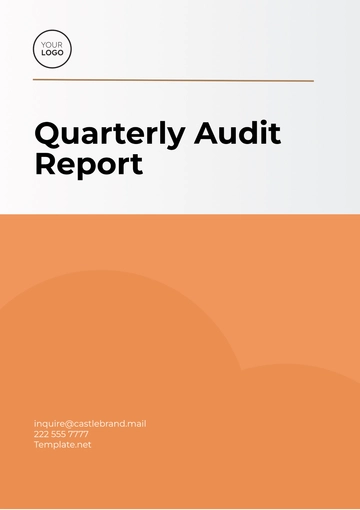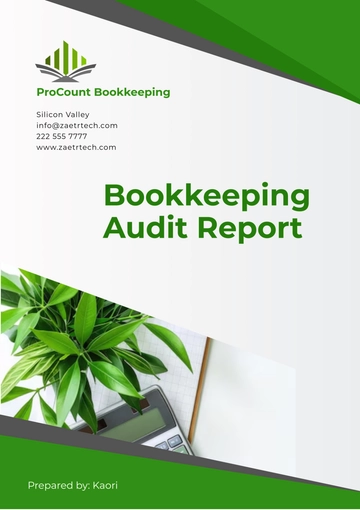Free Legal Corporate Compliance Audit Report
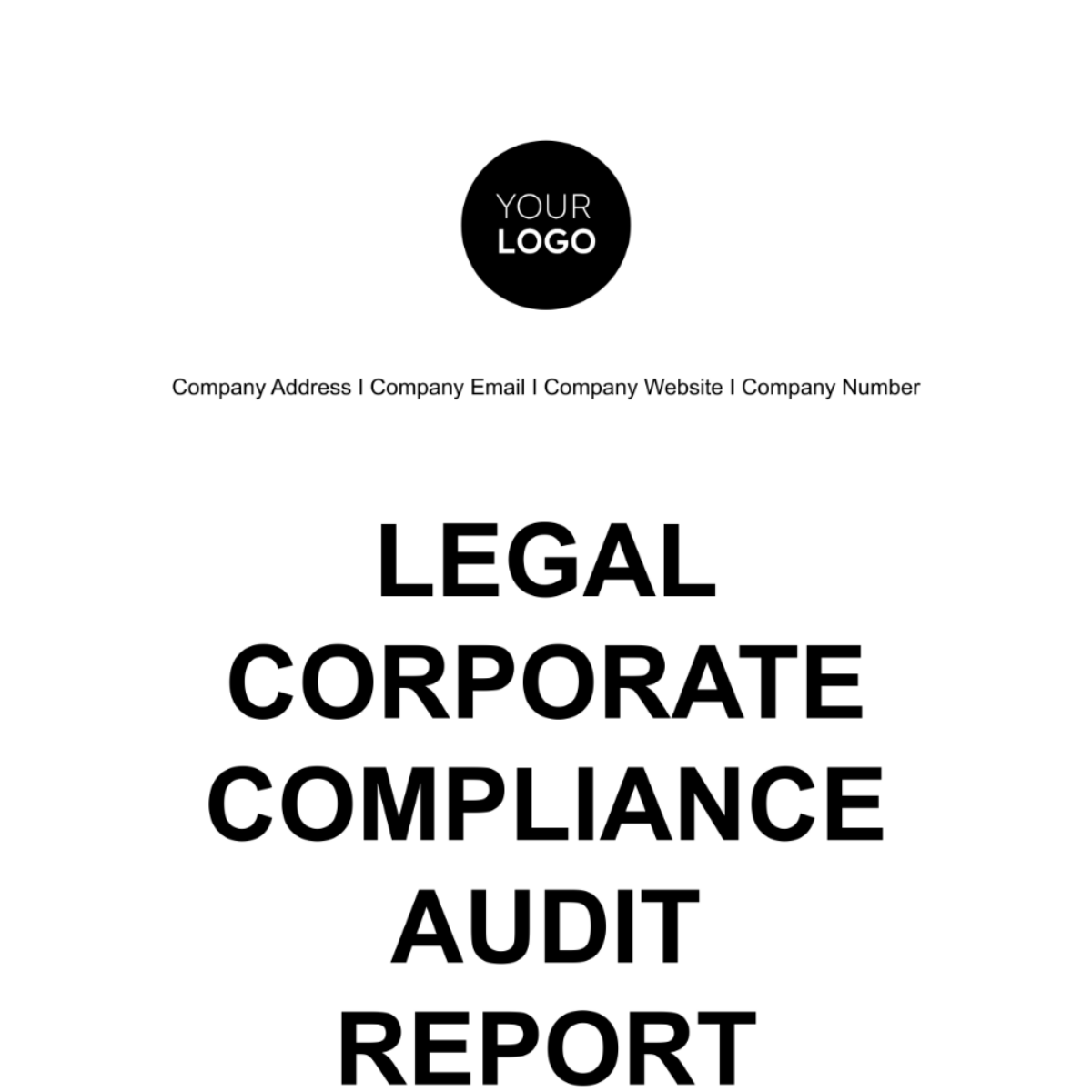
I. Executive Summary
The objective of this audit report is to provide a comprehensive review of [Your Company Name]’s adherence to legal and corporate compliance as outlined in the mandatory regulations of our industry. This audit is designed to assess the effectiveness of the policies currently in place, to ensure that risk management procedures are in alignment with the most recent regulations, and to identify areas where improvements can be made. The audit involved a meticulous evaluation of documentation, processes, and actions associated with legal and corporate compliance. The key areas of focus during the audit were Compliance Documentation, Data Privacy and Protection, Work Health and Safety Policies, Financial Reporting and Tax Compliance, and Regulatory Compliance and Licenses.
In a nutshell, while the audit discovered areas where [Your Company Name] complies well with current regulations, it also revealed some facets needing immediate attention. This comprehensive assessment aims to help our company not only reach full compliance but foster an environment of continuous improvement in our compliance approach. A proactive response to the findings and recommendations within this report will help ensure [Your Company Name] remains compliant with all necessary regulations, consequently upholding our company’s high standards for integrity and accountability in the business world.
II. Scope of Audit
The scope of this audit encompasses several key areas of [Your Company Name]’s operations. Each area was carefully reviewed to assess its compliance with relevant laws and regulations. The following provides a detailed overview of each area included in the scope of the audit:
A. Review of Compliance Documentation
Policy Documents: We reviewed all policy documents to ensure they are up-to-date and in compliance with current laws and regulations. This includes company-wide policies, department-specific policies, and any other policies that guide the company’s operations.
Procedural Guidelines: We examined the procedural guidelines to verify that they provide clear instructions for maintaining compliance. This includes guidelines for handling sensitive data, responding to legal requests, and managing potential compliance issues.
Regulatory Filings: We checked all regulatory filings to confirm they have been correctly completed and submitted on time. This includes annual reports, tax filings, and any other required regulatory submissions.
B. Data Privacy and Protection
Data Protection Policies: We evaluated the data protection policies to ensure they adequately protect all sensitive and personal data. This includes policies related to data storage, data access, and data disposal.
Data Handling Procedures: We assessed the procedures for handling data to ensure they prevent unauthorized access, alteration, or destruction of data. This includes procedures for data encryption, data backup, and incident response.
Data Breach Response Plan: We reviewed the company’s data breach response plan to ensure it is comprehensive and up-to-date. This includes procedures for identifying a breach, notifying affected parties, and mitigating the impact of the breach.
C. Work Health and Safety Policies
Safety Policies: We reviewed the safety policies to ensure they provide a safe working environment. This includes policies related to workplace hazards, emergency procedures, and employee training.
Incident Reports: We examined incident reports to identify any patterns of safety issues that need to be addressed. This includes reports of accidents, near misses, and unsafe conditions.
Safety Training Records: We checked safety training records to confirm that all employees have received appropriate safety training. This includes training on company safety policies, emergency procedures, and hazard recognition.
Safety Equipment Inspections: We reviewed records of safety equipment inspections to ensure that all safety equipment is in good working condition. This includes fire extinguishers, first aid kits, and personal protective equipment.
D. Financial Reporting and Tax Compliance
Financial Reports: We reviewed financial reports to ensure they accurately represent the company’s financial position. This includes balance sheets, income statements, and cash flow statements.
Tax Filings: We checked tax filings to confirm they have been correctly completed and submitted on time. This includes corporate tax returns, sales tax returns, and payroll tax returns.
Internal Controls: We assessed the company’s internal controls to ensure they effectively prevent financial fraud. This includes controls over financial reporting, cash handling, and asset management.
Audit Reports: We reviewed previous audit reports to identify any recurring financial issues that need to be addressed. This includes issues identified in internal audits, external audits, and regulatory audits.
Financial Policies and Procedures: We examined the company’s financial policies and procedures to ensure they promote financial accuracy and integrity. This includes policies related to financial reporting, expense reimbursement, and procurement.
E. Regulatory Compliance and Licenses
Licenses: We reviewed all licenses to ensure they are current and valid. This includes business licenses, professional licenses, and any other licenses required for the company’s operations.
Regulatory Compliance Reports: We examined regulatory compliance reports to verify that all regulatory requirements are being met. This includes reports related to environmental compliance, health and safety compliance, and data privacy compliance.
Regulatory Updates: We checked to see if the company is staying up-to-date with regulatory updates. This includes changes to laws, regulations, and industry standards that could impact the company’s compliance status.
Each of these areas plays a crucial role in maintaining [Your Company Name]’s legal and corporate compliance. By conducting a thorough audit of these areas, we can identify any potential issues and take corrective action as necessary.
III. Methodology
The methodology for this audit was designed to provide a detailed assessment of [Your Company Name]’s legal and corporate compliance. The following steps outline our approach:
A. Document-Based Review
The first step in our audit was a document-based review. This involved a thorough examination of all relevant documentation, including policy documents, procedural guidelines, regulatory filings, and internal audit reports. Our aim was to assess whether these documents are up-to-date, comprehensive, and in compliance with current laws and regulations.
B. Observational Review
In addition to the document-based review, we also conducted an observational review. This involved observing various processes and actions associated with legal and corporate compliance. Our aim was to assess whether these processes and actions are being carried out in accordance with the company’s policies and procedures.
C. Interviews
To supplement our document-based and observational reviews, we conducted interviews with various stakeholders in different departments. These interviews provided valuable insights into how the company’s policies and procedures are being implemented in practice. They also helped us identify any potential gaps or deficiencies in compliance that may not be evident from the documentation alone.
D. Audit Checklist
Throughout the audit, we used an audit checklist to guide our process. This checklist was based on the mandatory regulations of our industry and included all the key areas of legal and corporate compliance. It helped ensure that we did not overlook any important aspects of compliance during our audit.
E. Gap Analysis
After completing our reviews and interviews, we conducted a gap analysis. This involved comparing our findings against the requirements outlined in our audit checklist. Any identified gaps or deficiencies in compliance were documented for further analysis.
By following this methodology, we aimed to provide a thorough and objective assessment of [Your Company Name]’s legal and corporate compliance. We believe that this approach will help the company identify areas of strength and weakness, and take appropriate action to improve its compliance efforts.
IV. Key Findings
Key findings provide a clear overview of the areas of compliance that were reviewed during the audit, the findings for each area, and the overall compliance status. The following table presents these key findings:
Area of Compliance | Findings | Compliance Status |
|---|---|---|
Data Privacy and Protection | Minor gaps found in periodic review process | Partially Compliant |
Work Health and Safety Policies | ||
Financial Reporting and Tax Compliance | ||
Regulatory Compliance and Licenses | ||
Review of Compliance Documentation |
The audit on data privacy and protection revealed minor gaps in the periodic review process for data privacy and protection. While the company has policies and procedures in place to protect sensitive and personal data, our review found that these policies and procedures are not always being followed consistently. This has resulted in some minor gaps in data protection, which could potentially expose the company to risks related to data breaches.
Ensuring that we have robust processes in place for reviewing and updating our data protection measures is crucial. It is to make sure that we maintain the trust of our clients and staying compliant with regulations. Furthermore, any gaps in the data protection process can lead to reputational damage, and regulatory penalties.
In light of these findings, it is clear that there is a need for [Your Company Name] to review and strengthen its data privacy and protection processes. This will not only help to address the minor gaps identified in the audit but will also ensure that the company is well-prepared to manage any potential data-related risks in the future. By addressing all of these issues, the company can improve its compliance efforts and reduce its exposure to legal and regulatory risks.
V. Recommendations
Based on the findings of the audit, a set of recommendations has been developed to improve the company’s legal and corporate compliance. These recommendations are intended to address the issues identified in the audit and to enhance the company’s overall compliance efforts.
A. Process Enhancement
Procedure Rigor Improvement: Implementing more rigorous procedures ensures that the company’s compliance efforts are thorough and effective. This helps to prevent any oversights or errors in the compliance process.
Effectiveness Evaluation Implementation: Regularly evaluating the effectiveness of these enhancements ensures that they are achieving the desired results and identifies areas for further improvement.
B. Compliance Awareness Program
Program Development Initiative: Developing a comprehensive compliance awareness program educates employees about the importance of compliance and their responsibilities in maintaining compliance. This empowers employees to contribute to the company’s compliance efforts.
Program Update Procedure: Regularly updating the program to reflect changes in laws and regulations ensures that employees are always informed about the latest compliance requirements.
C. Policy and Procedure Update
Review Process Implementation: Implementing a process for regularly reviewing and updating policies and procedures ensures that they remain current and effective.
Employee Awareness Enhancement: Ensuring that all employees are aware of any changes to policies and procedures ensures that they are always operating in compliance with the latest requirements.
Effectiveness Evaluation Procedure: Regularly evaluating the effectiveness of these updates ensures that they are achieving the desired results and identifies areas for further improvement.
D. Procedure Improvement
Rigorous Procedure Implementation: Implementing more rigorous procedures ensures that the company’s operations are thorough and effective.
Staff Training Enhancement: Providing additional training to staff ensures that they have the skills and knowledge needed to maintain compliance.
Resource Allocation Initiative: Employing additional resources to manage procedures ensures that they are carried out effectively and efficiently.
E. Regular Compliance Reviews
Audit Schedule Setup: Setting up a schedule for regular audits ensures that the company’s compliance efforts are continuously monitored.
Review Checklist Creation: Creating a checklist for each review ensures that all areas of compliance are covered in each review.
Comprehensive Coverage Assurance: Ensuring that all areas of compliance are covered in each review ensures that the company’s compliance efforts are comprehensive.
VI. Conclusion
Overall, the audit discovered areas where [Your Company Name] complies well with current regulations, but also revealed some facets needing immediate attention. This comprehensive assessment aims to help our company not only reach full compliance but foster an environment of continuous improvement in our compliance approach.
A proactive response to the findings and recommendations within this report will help ensure [Your Company Name] remains compliant with all necessary regulations, consequently upholding our company's high standards for integrity and accountability in the business world.
Moreover, it’s important to note that maintaining compliance is not a one-time task, but an ongoing effort. As laws and regulations evolve, so too must our compliance efforts. Regular audits are crucial in ensuring that we stay on top of these changes and adapt our policies and procedures accordingly.
- 100% Customizable, free editor
- Access 1 Million+ Templates, photo’s & graphics
- Download or share as a template
- Click and replace photos, graphics, text, backgrounds
- Resize, crop, AI write & more
- Access advanced editor
Trust Template.net to provide a comprehensive and user-friendly resource for compliance audit reporting in just a few clicks! Navigate compliance audits with confidence with the Legal Corporate Compliance Audit Report Template! This fully editable and customizable report ensures seamless customization through the AI Editor Tool for accurate reporting! Access immediately!
You may also like
- Sales Report
- Daily Report
- Project Report
- Business Report
- Weekly Report
- Incident Report
- Annual Report
- Report Layout
- Report Design
- Progress Report
- Marketing Report
- Company Report
- Monthly Report
- Audit Report
- Status Report
- School Report
- Reports Hr
- Management Report
- Project Status Report
- Handover Report
- Health And Safety Report
- Restaurant Report
- Construction Report
- Research Report
- Evaluation Report
- Investigation Report
- Employee Report
- Advertising Report
- Weekly Status Report
- Project Management Report
- Finance Report
- Service Report
- Technical Report
- Meeting Report
- Quarterly Report
- Inspection Report
- Medical Report
- Test Report
- Summary Report
- Inventory Report
- Valuation Report
- Operations Report
- Payroll Report
- Training Report
- Job Report
- Case Report
- Performance Report
- Board Report
- Internal Audit Report
- Student Report
- Monthly Management Report
- Small Business Report
- Accident Report
- Call Center Report
- Activity Report
- IT and Software Report
- Internship Report
- Visit Report
- Product Report
- Book Report
- Property Report
- Recruitment Report
- University Report
- Event Report
- SEO Report
- Conference Report
- Narrative Report
- Nursing Home Report
- Preschool Report
- Call Report
- Customer Report
- Employee Incident Report
- Accomplishment Report
- Social Media Report
- Work From Home Report
- Security Report
- Damage Report
- Quality Report
- Internal Report
- Nurse Report
- Real Estate Report
- Hotel Report
- Equipment Report
- Credit Report
- Field Report
- Non Profit Report
- Maintenance Report
- News Report
- Survey Report
- Executive Report
- Law Firm Report
- Advertising Agency Report
- Interior Design Report
- Travel Agency Report
- Stock Report
- Salon Report
- Bug Report
- Workplace Report
- Action Report
- Investor Report
- Cleaning Services Report
- Consulting Report
- Freelancer Report
- Site Visit Report
- Trip Report
- Classroom Observation Report
- Vehicle Report
- Final Report
- Software Report

